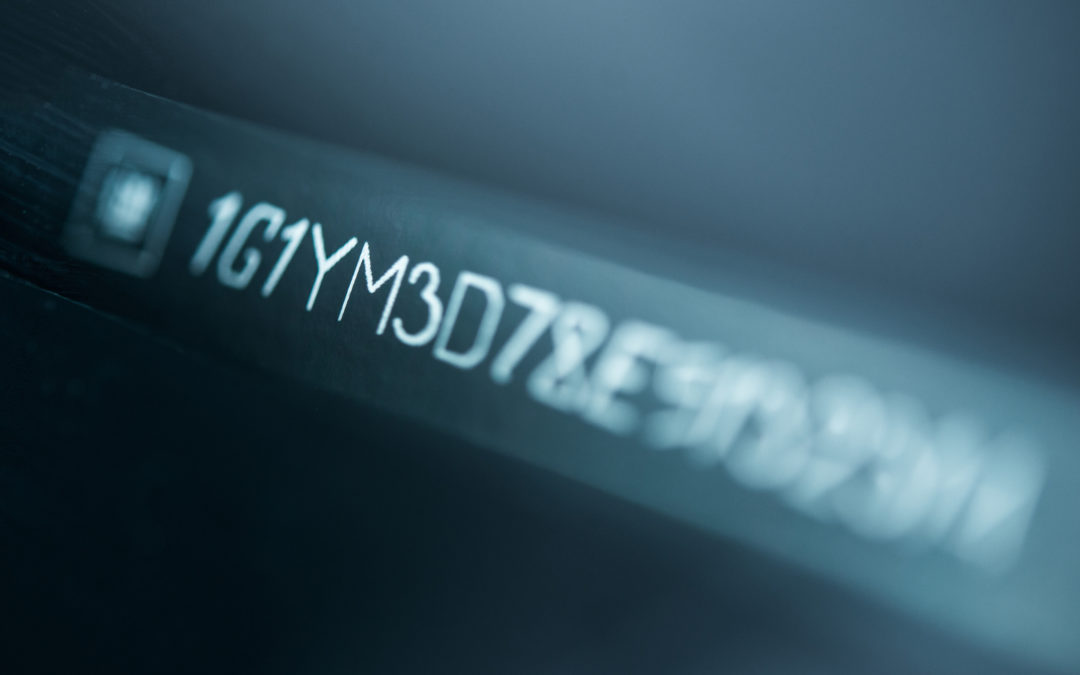Much like a Social Security number for a person, your car’s VIN number is an essential piece of information that identifies your car as an individual.
A VIN number can tell you a lot about a car, like its manufacturing information, any past or present recalls, and much more. So, whether you’re just curious or are buying your own car, here’s everything you can learn from a VIN number.
Everything You Can Learn from a VIN Number
A vehicle identification number (VIN) is a serial number that is used by the automotive industry to identify individual vehicles. VIN numbers can display a car’s features, specifications, and manufacturer. You can also use it to track safety recalls, registration histories, liens, claims, thefts, and insurance coverages.

You can find your VIN number in a couple of different places. The most common location is on the dashboard window of the driver’s side. Another place it might be is in the driver’s side door jamb. On older models, the VIN number may be under the hood or above the driver’s wheel on the front end of the car’s frame.
What Does My VIN Number Mean?
Your VIN number isn’t just a medley of random letters and numbers squished together. Instead, it’s a carefully decided mixture of characters that are broken up into six parts: World Manufacturer Index, Manufacturer Specification Data, Check Digit, Model Year, Plant Location, and Vehicle Unique Number.

Digits 1-3: The World Manufacturer Identifier
The first digit is a number or letter that tells you the country of origin. For example, cars manufactured in the United States start with either 1, 4, or 5, while Canada’s code is 2 and Mexico’s is 3.
The second letter tells you about the manufacturer. In some cases, the letter will match the manufacturer’s name, where “A” stands for Audi, “B” stands for BMW, and so on. However, this isn’t always the case because multiple car manufacturers share the same first letter, so it’s a good idea to not always rely on this rule unless you know it applies to your make.
The third letter tells you the vehicle’s type or manufacturing division. Together, this first set of three letters and numbers creates the World Manufacturer Identifier or WMI code.
Digits 4-8: Manufacturer Specification Data
This section is called the Manufacturer Specification Data, which can tell you about your car’s model, body type, restraint system, transmission type, and engine code. This part of the code is why an online insurance provider or car worth estimator can automatically pull up your exact model.
Digits 9-11: Check Digit, Model Year, and Plant Location
The ninth digit is the “check digit” and can tell you whether this is a valid VIN number. This number is based on a specialized math formula developed by the U.S. Department of Transportation.
The tenth digit tells you your car’s model year.
The eleventh digit is the plant code. This tells you which manufacturing plant the car was built in, which is how safety issues and recalls are tracked.
Digits 12-17: Vehicle Unique Number
This part of the VIN number is sequential based on when it was manufactured. These are the digits that the vehicle gets stamped with when it goes through the production line. So, the very first vehicle might have a VIN ending in 000001.
Can You Get Personal Information from a VIN Number?
VINs are considered personal information. The best way to look at it is to treat your car’s VIN number like a Social Security number. If your VIN number gets into the wrong hands, then thieves can use it fraudulently. In fact, a person can use a single VIN to register dozens of vehicles.
But can just anybody get personal information about a driver from their car’s VIN number?
Yes and no.
As you can see with the VIN number’s breakdown, most of the code tells you details about the manufacturing. However, if your name (like registration and insurance) is tied to the VIN, then it’s possible that another person could trace you.
But don’t worry about this too much: There are few free and legitimate resources where you can search VINs to learn about other people.
How Do I Check a VIN Number for Free?
Many people opt for searching VIN numbers before buying a used car. It can be hard to trust the seller’s history without any paperwork or proof. Instead of trying illegitimate resources for searching VINs, you can get better peace of mind by hiring an independent mechanic to survey the car before purchasing.
If you’d like to check online anyway, then there are a few databases.
Through the National Highway Traffic Safety Administration (NHTSA), there is a handy search tool that is useful for checking any recalls or safety issues.
If you’re looking for information about a stolen car, then typing your VIN in with the National Insurance Crime Bureau’s VINCheck Lookup search tool can point you in the right direction.
Conclusion
VIN numbers are essential bits of information that can tell you anything you need to know about your car.
Plus, knowing your VIN can help you get accurate information when signing up for car insurance, checking the status or history of a vehicle before purchase, finding its status if it’s been stolen, and any important history like maintenance records. Most importantly, a VIN number can tell you important safety notices or recalls for your model.
Check out the DriveSafe Online blog for more helpful driving and maintenance tips.

Patrick M. is Editorial Director for the always expanding DriveSafe Online library of courses. With over two decades of experience developing award-winning training, he now focuses on innovating online driver safety training. Pulling from his background in journalism, he steers the wheel behind the creation of top-tier content that promotes a better journey—whether on the digital highway of learning or the real roads we travel every day.
